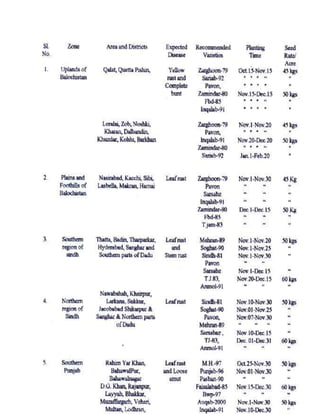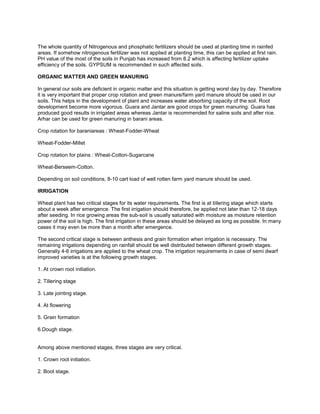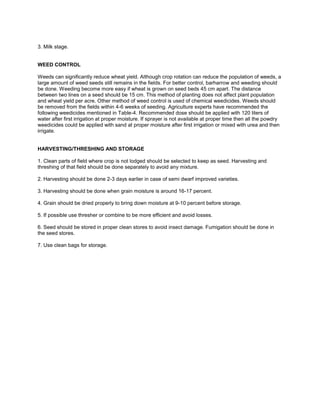Wheat is the world's leading staple food crop and is grown widely across temperate regions. In Pakistan, it is the staple food and largest crop, contributing significantly to agriculture and GDP. The document provides details on wheat production in Pakistan, including recommended varieties for different zones, planting times, fertilizer and irrigation requirements, and pest and disease management. Key production tips emphasize proper variety selection, fertilizer and water management, and controlling weeds and diseases.








